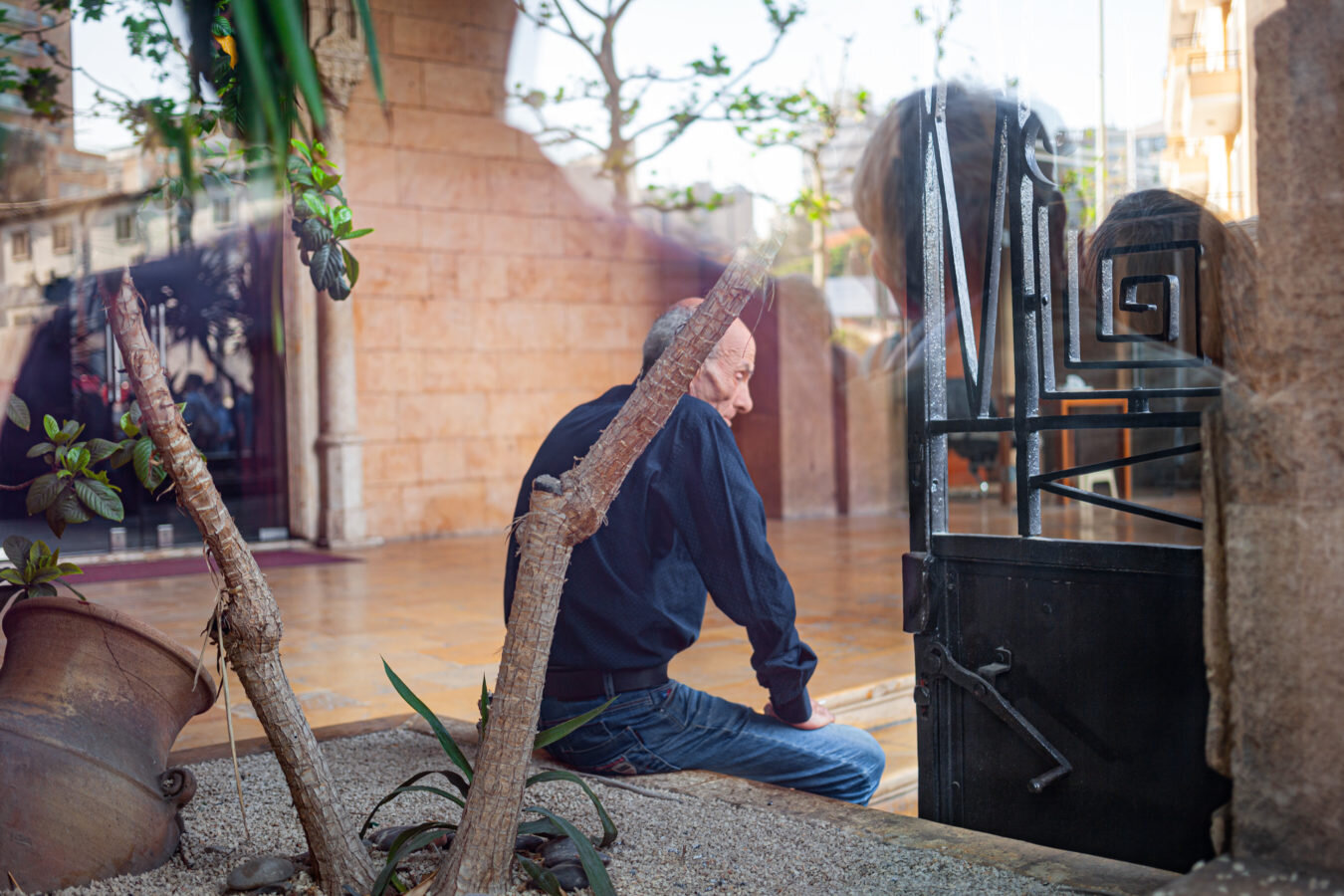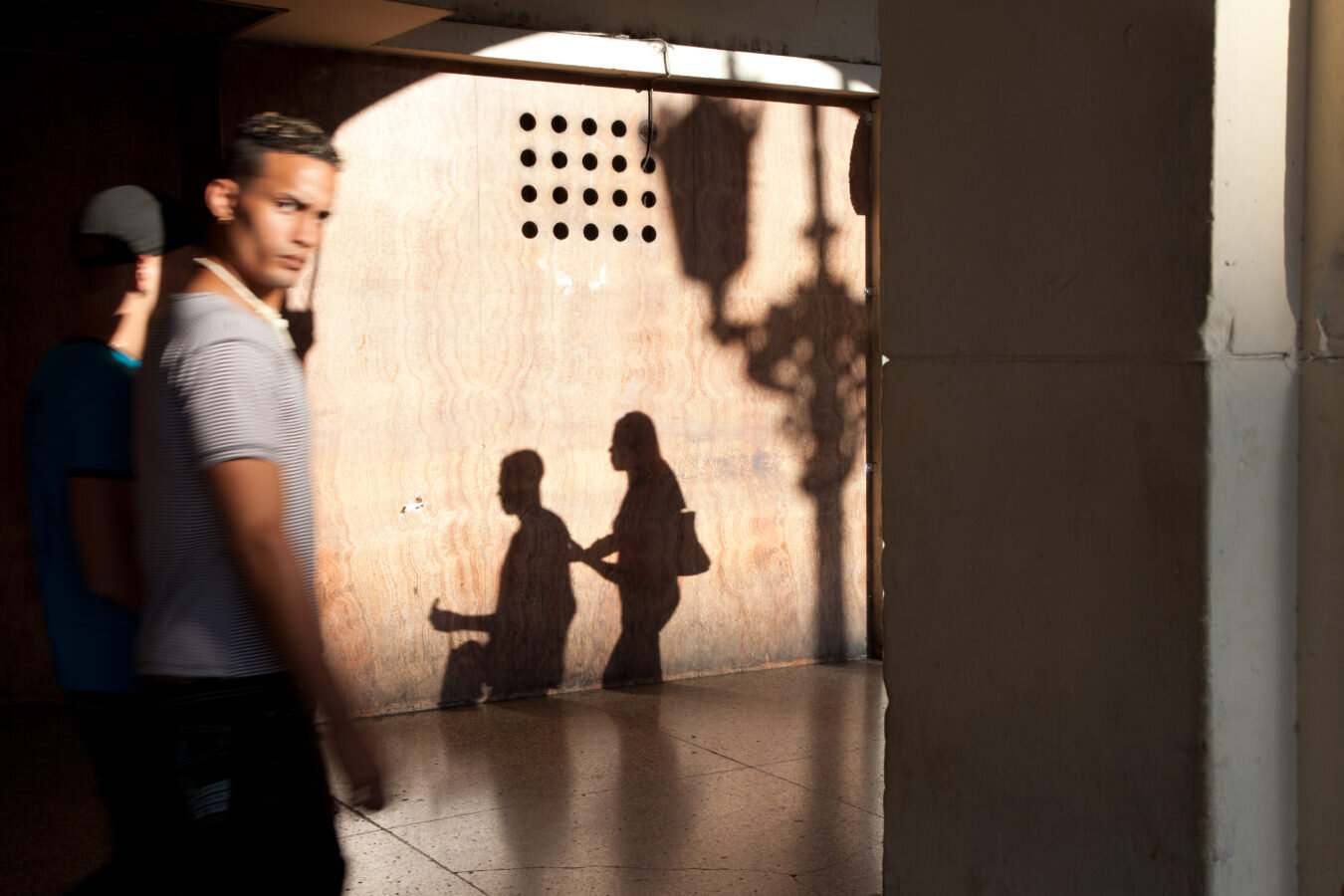Connection / Refraction: The Reassuringly Complex Photography of Sarah Dinnick
“My work focuses on the interconnectedness of as many elements and layers as possible, reaching from the distance of the camera’s lens and the density of the surroundings through to an evocation of intimacy.”
Intimacy and Interconnection
Confronted daily by mappings of the coronavirus’ impact and co-existing in our surreal new quasi-reality, we can’t escape the obvious - we are all connected. Perceived divisions via border, religion, class, ideology, sexuality or political affiliation disintegrate in the face of a common threat. The global nature of the virus reinforces what yogis, physicists and philosophers have said all along: we are all one. Our humanity and our vulnerability unite us.
But that interconnection can be hard to grasp. What does it mean in our day to day lives and why does it matter? It often feels more abstract than actual, like we can say the words, but the gravity of it escapes us.
The beautiful work of Canadian photographer Sarah Dinnick (follow on @sdinnick ) explores this theme, alongside related themes of intimacy, reflection, transparency and distance. Into a visual landscape dominated by 24/7 news coverage of a world in chaos, Sarah Dinnick’s images float, settle and invite contemplation.
Her photographs, often of lone figures in a space, have the effect of making me feel less isolated; her layers of light, shadow and reflection caught on the surface, draw me in and connect me to the experience of strangers.
Beirut
A self-described introvert, Dinnick’s practice includes traveling, wandering and observing from a careful distance. She uses a fixed lens (no zoom ever) and does no post production, so what you see is what she saw. Every image remains exactly as she composed it with her camera and body. This discipline is integral to her work, she explains. She shows “exactly what happened,” always “true to life.”
Spanish Beach
Her subject matter is often a figure moving through a particular place. She is curious about the relationship between people and the spaces they inhabit - and also the graphical or formal patterns that movement produces. She creates a sense of dislocation and dreaminess in many of her images by capturing or manipulating layers of light that reflect off surfaces in the space. Attempting to understand the layers and see through the distance, we as viewers lean in closer.
A graphic designer by trade - she co-founded the award winning firm Dinnick & Howells - Dinnick employs graphic design elements in surprising and satisfying ways, which help lend her images a confidence and voice all their own. Line, color, focal point, balance and texture play in her work to give it its visual complexity.
Weave
Influences
Dinnick situates her work in the tradition of street and documentary photography. She counts photographer Helen Levitt as a influence. Levitt grew up in Bensonhurst, in Brooklyn, in the 20’s and 30’s where she became one of the world’s most influential street photographers. Dinnick attributes some of her shooting methodology to Levitt’s advice to “go slowly and give people space.”
Other noteworthy photographers who influence her work include Sally Mann, Gary Winogrand, Alex Soth, Alex Webb and Rebecca Norris Webb.
Light, Reflection and Transparency
Quarantine life and fear of contagion has initiated a new relationship between people and architectural spaces. The increasingly popular theory of density to maximize value from expensive corporate, educational or residential properties now presents massive economic, logistical and health challenges. It’s no longer safe to have employees or students elbow to elbow or crammed into communal spaces at shared desks. Companies, schools and residential facilities must rethink how they organize people in spaces in order to maintain a new normal spacing protocol.
Dinnick often investigates people’s relationships to built form and physical spaces in her work. Capturing otherwise lost moments of people in interesting spaces, she asks universal questions: what is this person’s experience in this space? What is my connection to this person and this person’s experience? Is my experience similar or different, and why? Does this space impact the person and the experience in the long term? The use of surfaces to create reflection and layers of transparency speak to the complex nature of the questions.
Hadid
In the current moment I find Dinnick’s work immensely comforting. Her careful, considerate stance steadies me. Her compassionate eye softens the dread thats been hardening my insides over the last five months, a result of fear and uncertainty.
Her calm patience seems to imply: don’t worry, trust, everything will be ok.
Miami
“There is this veil in my work. A separation of sorts. This veil can be glass or material or light etc but the obscurity it presents draws you in and makes you look more closely and creates and informs intimacy.”
Street photography often has a voyeuristic element. The subject is often not aware they are being photographed. Dinnick shows great respect for all of her subjects. Giving space, taking time, allowing layers to form between them even when, or because they, obscure and blur. She’s shy by nature, so a separation from her subject feels most comfortable. The effect is a mix of captured quiet moments and startling intimacy in being caught looking, as dramatically illustrated by “The Walk.”
The Walk
Mary O’Connor, author of Seduced by Modernity: The Photography of Margaret Watkins has written of Dinnick, “…her photographs seem to be eavesdropping on interior life – the hint of an inside, not fully accessible. The distance remains, and so too a longing for intimacy with that other, that difference (or is it sameness). Sometimes the figures are inaccessible in their aloneness – and that is the intimacy we get a glimpse of. We recognize it, as it is also ourselves.”
The Standard
Regardless of or perhaps due to the amount of time we spend connecting with others or observing others online, more and more people admit to feeling a growing sense of personal isolation. Many, drowning in the endless tide of news about infections, deaths, brutality, abuse, corruption, misinformation and economic emergencies, experience an unwelcome feeling of impotency.
The narrative thread running through Dinnick’s work is that these feelings are shared, universal even. And in experiencing that in her work, we feel a sense of connection, and relief.
“When you freeze that moment of a figure fleeting or someone lingering, it tells a unique – but at the same time, universal – story. It can be a moment of incredible isolation, empathy, joy or tension. ”
Lakeview
Dinnick feels that she must “look even more closely for moments of beauty, isolation and connection” these days. What does it mean to be related to the people around us, strangers we pass on the street or see from a car window? She wants her work to “humanize these people we come across and to communicate that we are all intimately connected.”
Interconnectedness may be difficult to grasp, especially during a time of unknowns and fears. But this extraordinary body of work makes clear that our isolation and refracted knowledge are core to our unique human experience, and our undeniable, universal bond.
All photographs by Sarah Dinnick
@sdinnick - instagram
Cover Photo: Paris




















